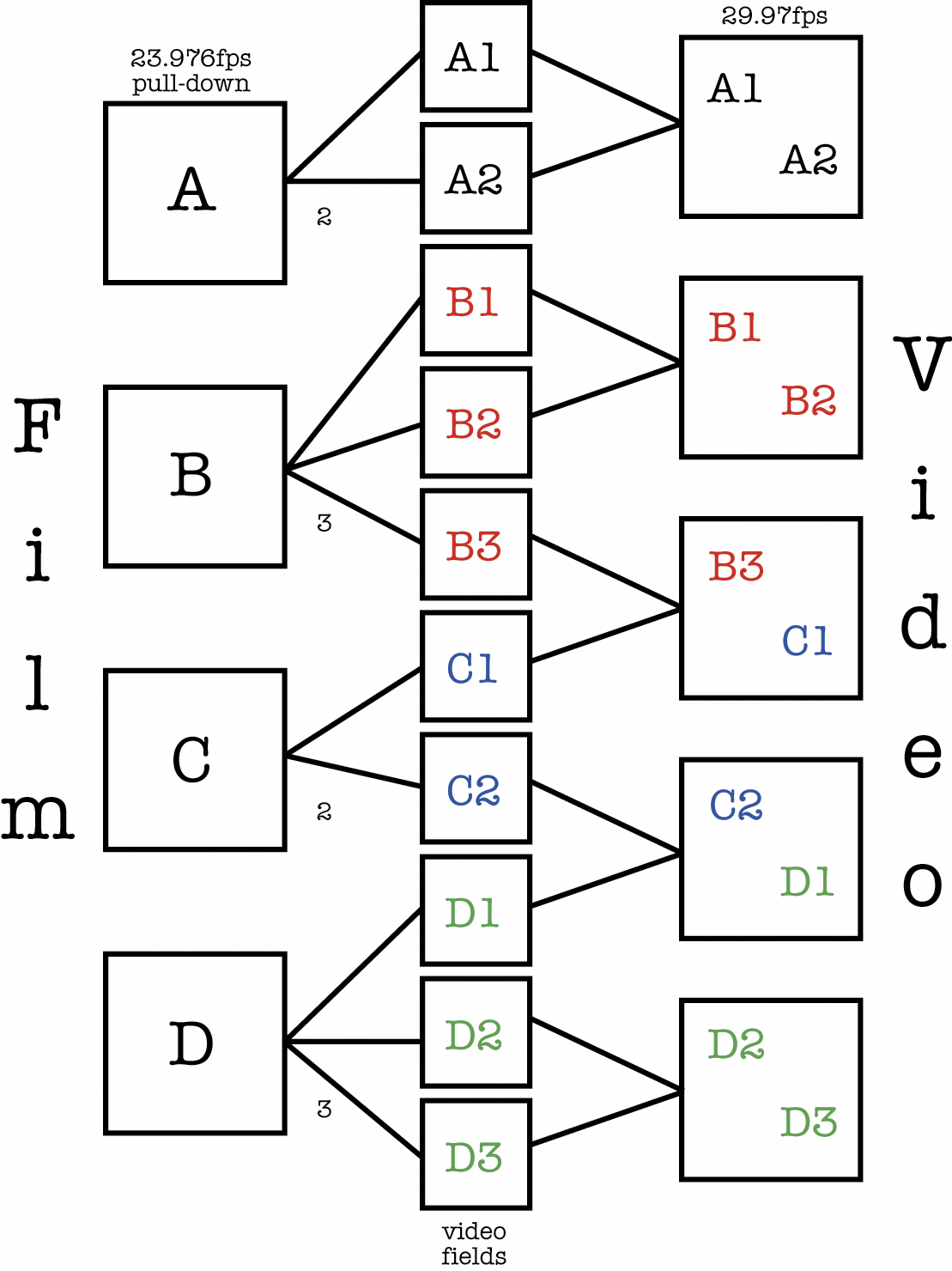Two-Three Pull-Down
The 2-3 pull-down allows for a smooth transfer to NTSC video without any unwanted or noticeable pitch changes in the audio. It consists of a combination of speed change and frame-to-field counting.
The following steps are involved during the process:
-
The film speed is slowed or pulled down to 23.976 fps (-0.1 %).
-
The first frame of film is transferred to the first 2 fields of video.
-
The second frame of film is transferred to 3 fields of video, the 2 fields of the second video frame, and just the first field of the third video frame.
NoteThis is where the 2-3 part of the name comes from. Each alternating frame of film is transferred to 2 fields of video, then 3 fields of video, and so on.
-
The third film frame is transferred to the second field of video frame 3 and the first field of video frame 4.
-
The remaining film frames are transferred in this manner, alternating between 2 and 3 fields of video, until the end of the transfer. After 4 frames of film have been transferred this way, an even 5 video frames will be created. Over the course of one second, 24 frames of film and 30 frames of video will have gone by. Because they are running at -0.1 %, the actual frame rate is 29.97 video frames per second, the NTSC standard.

In order to make accurate decisions regarding audio pull-down and video pull-up when working with NTSC film transfers in Nuendo, it is important to have a clear understanding of 2-3 pull-down.
Even though 29.97 fps (video speed) is a faster frame rate than 24 fps (film speed), the video is running -0.1 % slower than the original film due to the 2-3 transfer process. Therefore, you need to slow the audio down a bit so that production audio, such as DAT tapes or files from a field recorder from a film shoot are played back in sync with NTSC video.
Many video editors working with NTSC video refer to 30 fps as film speed as opposed to 24 fps. The reason for this is, if you speed NTSC video (29.97 fps) up by 0.1 %, you are running at the same speed as the original film at 24 fps. Conversations regarding this can often get very confusing. Make sure that you have a clear understanding of the material you are working with when dealing with film transfers and frame rates. It will avoid many mistakes and save time in the long run.